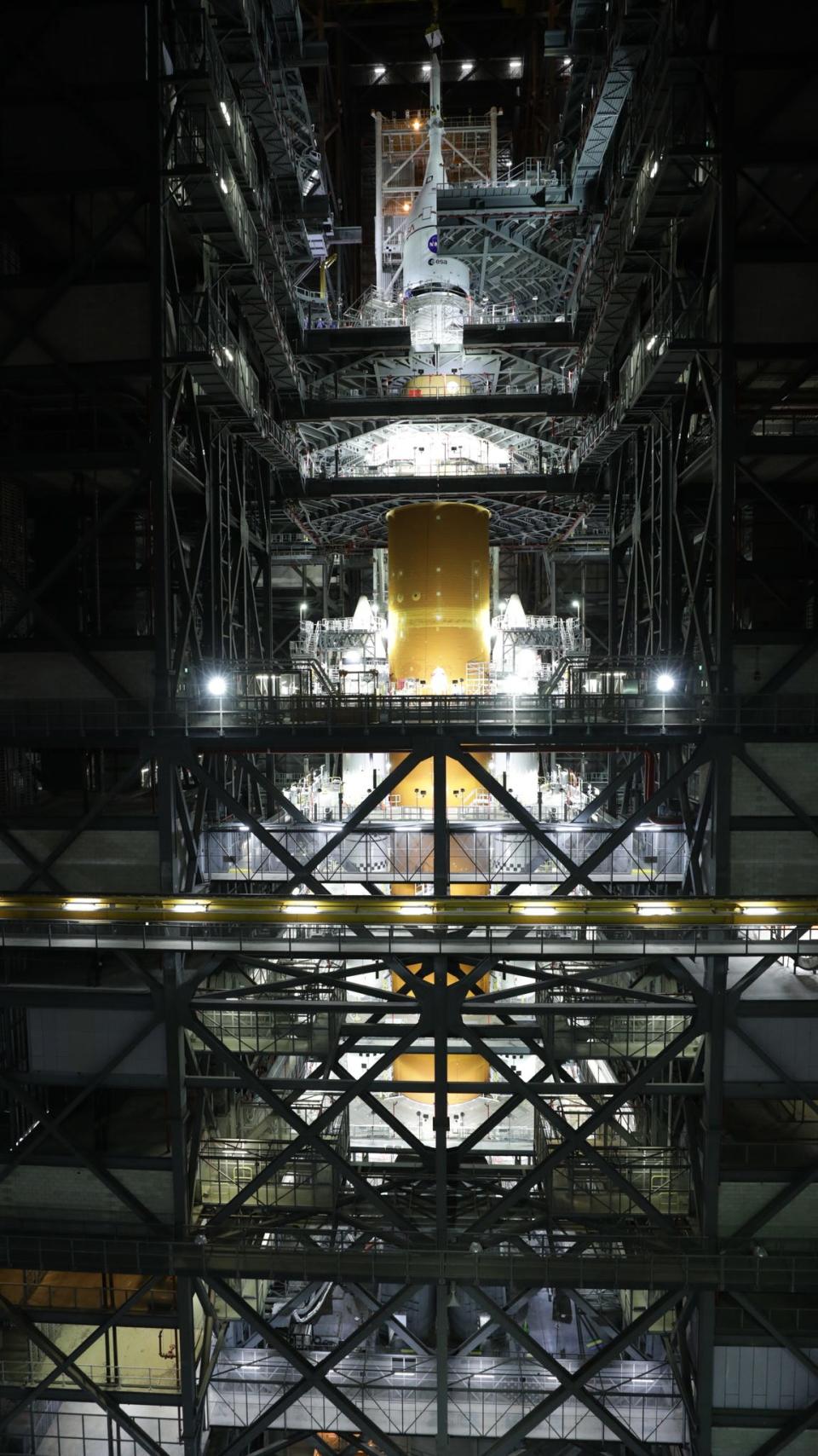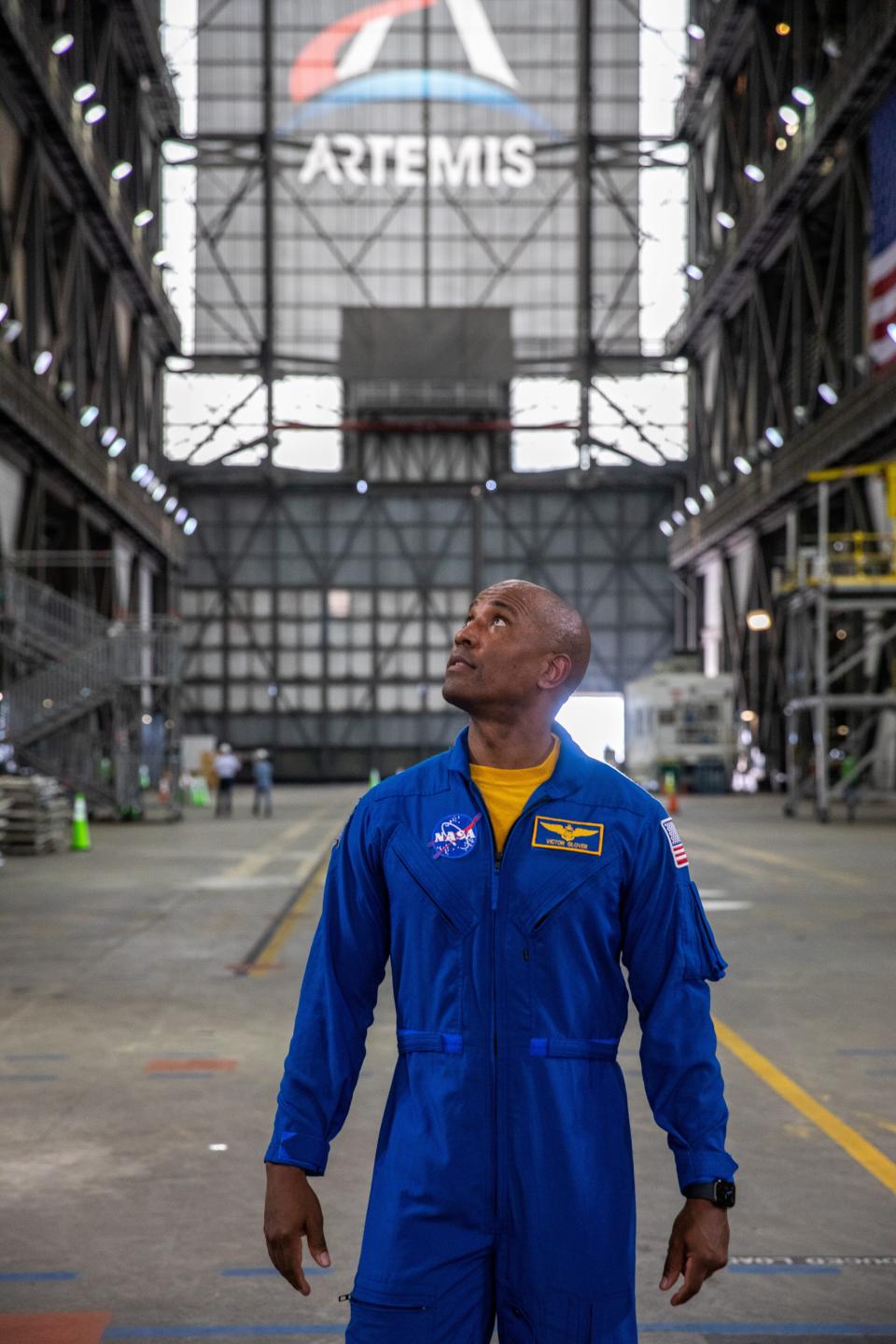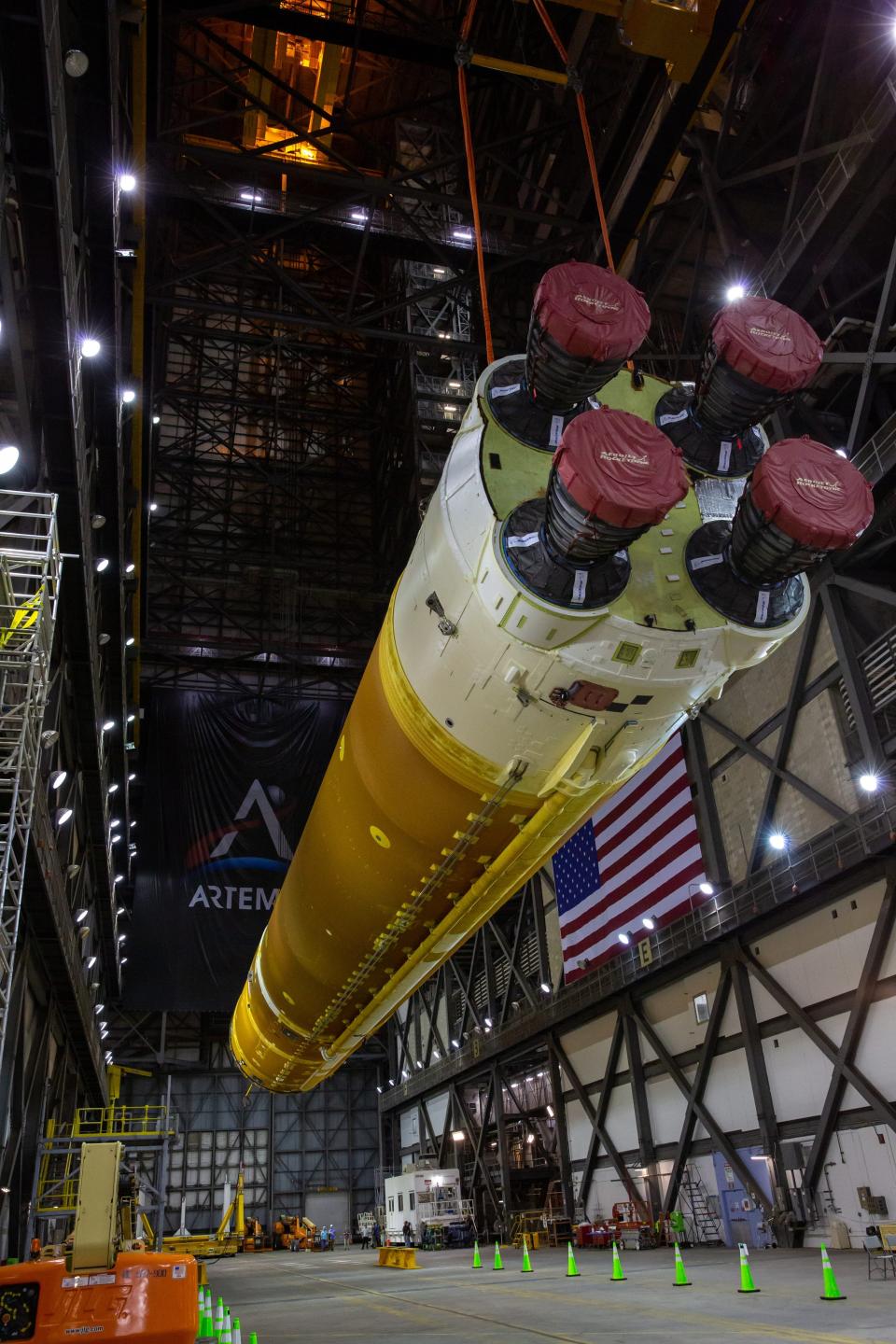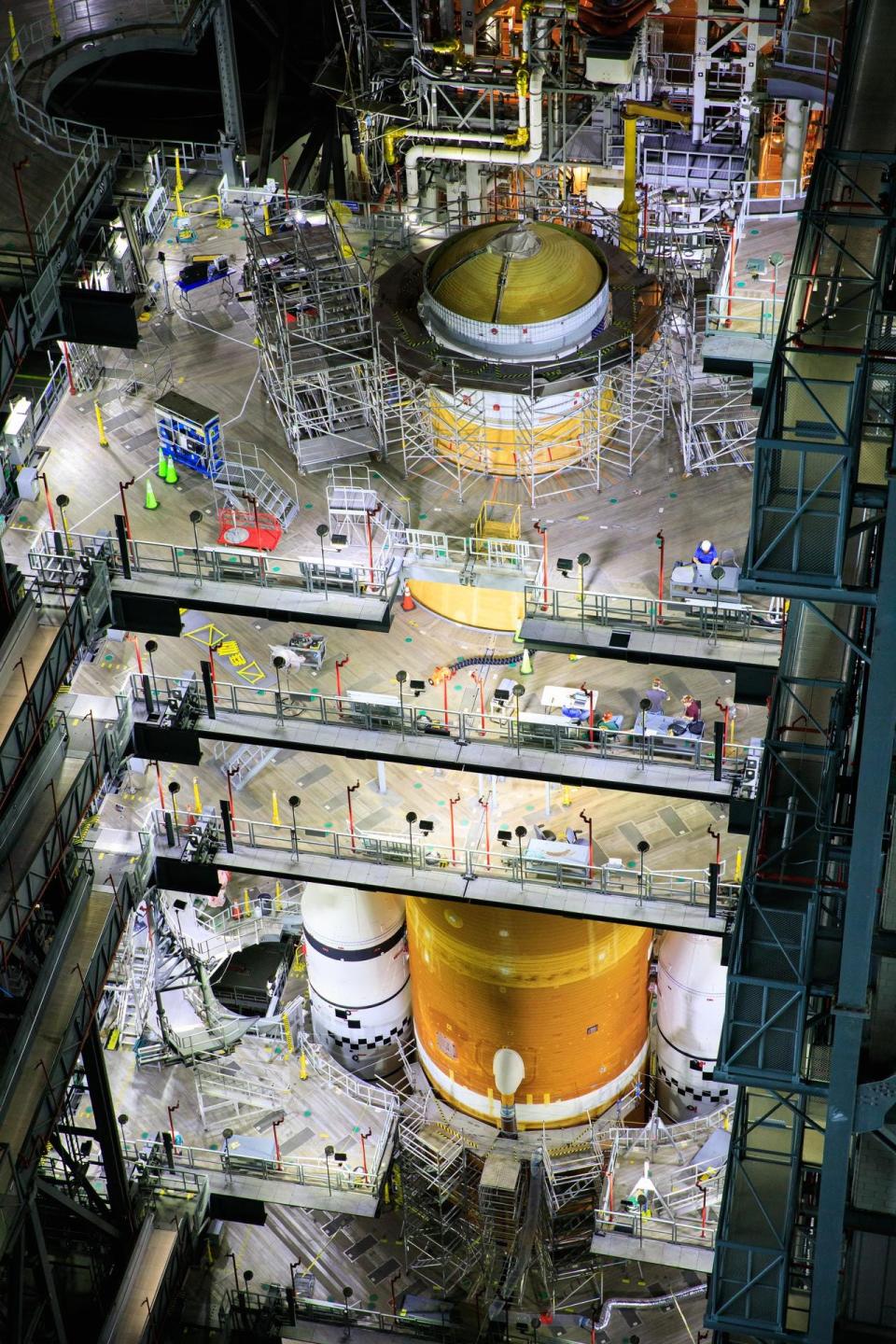Photos and video show how NASA stacked its next moon rocket taller than the Statue of Liberty
NASA has finished stacking the parts for its new moon rocket at the Kennedy Space Center in Florida.
The 23-story Space Launch System is taller than the Statue of Liberty and barely fits into photos.
NASA plans to launch SLS on an uncrewed trip around the moon in February, before flying astronauts.
NASA has finally finished building its next moon rocket, and it's a behemoth.
Towering at 322 feet, the Space Launch System (SLS) is taller than the Statue of Liberty, which is 305 feet high. The system has to be that large to produce enough thrust to push its Orion spaceship all the way around the moon - 1,000 times farther than the International Space Station. NASA intends to use this launch system to put boots back on the lunar surface for the first time since 1972 and, eventually, to build a long-term base there.

But first, SLS has to fly around the moon without any astronauts onboard - a mission called Artemis I - to prove that it can safely carry humans on future flights. NASA aims to launch that mission in February.
So far this year, the agency has test-fired the rocket's engines and shipped all the parts to the Kennedy Space Center in Cape Canaveral, Florida. There, NASA engineers and technicians have been slowly stacking the pieces of the rocket in a vertical-assembly building. They secured the final piece - the Orion spaceship - just before midnight on Thursday, making the whole system 23 stories tall.
"It's a heck of a sight, and it is really nice to see," Mike Bolger, who manages the facilities at Kennedy, said in a briefing on Friday. "The rocket's so big that, to fully appreciate it, you need to get a little bit of distance from it to actually see it top to bottom."
SLS is three years behind schedule and nearly $3 billion over budget. But the rocket is finally whole, and its first launch is within NASA's sights.
How NASA stacked its monster moon rocket

Until June, the SLS' solid rocket boosters - white mini-rockets that attach to either side of the rocket to give it an extra boost - sat alone in the assembly building. That's when NASA lifted the rocket's core stage into the building and lowered it in between the boosters.
The core stage is the biggest piece of SLS and its structural backbone. It's also the world's largest and most powerful rocket stage, according to NASA.

Getting the core stage into the stacking facility was no easy feat. NASA shared a time-lapse video of the process, below.
With the core stage in play, rocket-stacking began in earnest. In July, NASA added the interim cryogenic propulsion stage, which is supposed to give the Orion spaceship one final push towards the moon after the core stage falls away, high above Earth.

Technicians then hooked up all the lines, called "umbilicals," which provide power, communications, and fuel to the rocket.
"While all that was going on, in parallel facilities here at Kennedy, we were fueling the Orion spacecraft and readying it for flight," Bolger said.

Finally, Orion was ready this week. NASA lifted it to the top of the vertical-assembly building and lowered it onto the propulsion stage, finishing the stacked rocket with a pointy top.
-NASA's Exploration Ground Systems (@NASAGroundSys) October 22, 2021
"It's a heck of a rocket, and Orion's a heck of a spacecraft," Bolger said.
Now, technicians must finish connecting and integrating all the final pieces. They'll conduct more tests to verify that the parts are working together properly. If that goes according to plan, NASA plans to conduct a "wet dress rehearsal" in January, practicing all the launch-day procedures, including loading the rocket with 730,000 gallons of liquid propellant.
If the agency isn't ready to launch in February, it has back-up opportunities in March and April.
Read the original article on Business Insider

